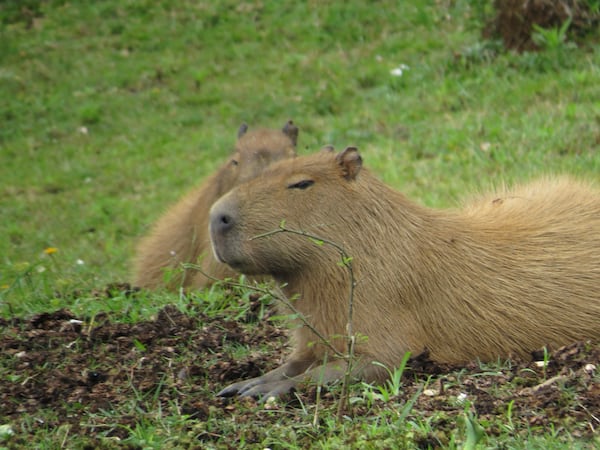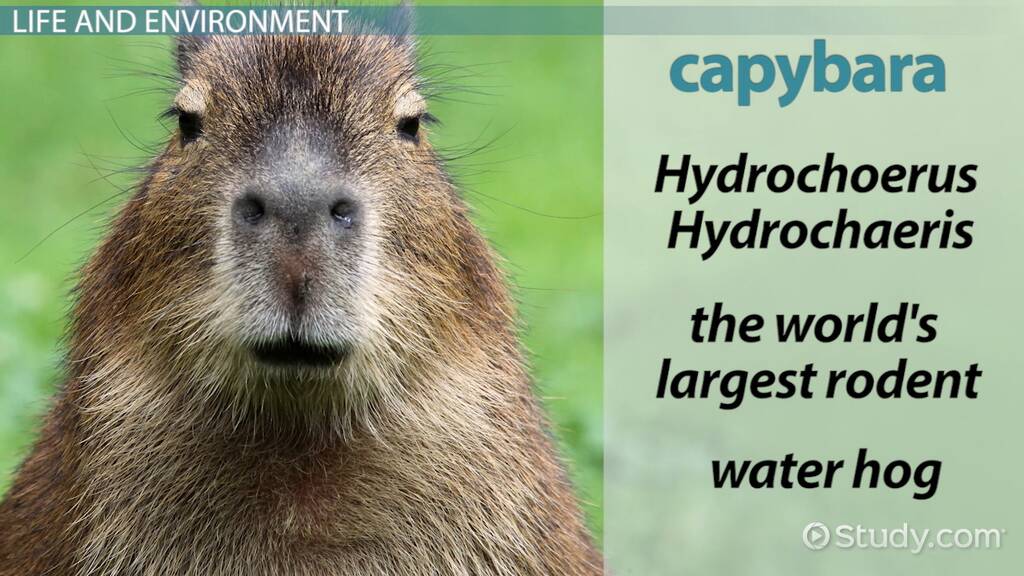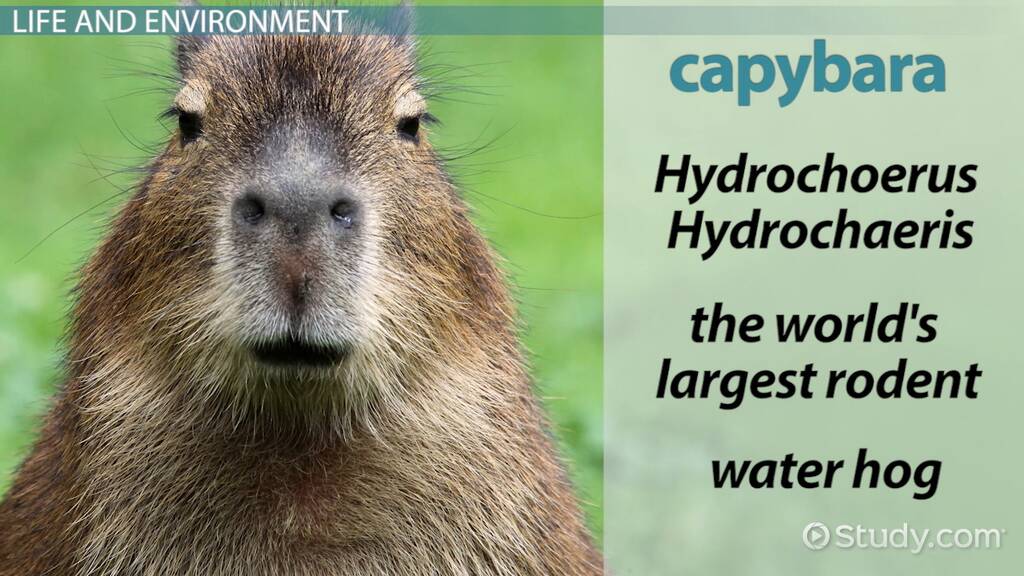So you’ve recently developed an interest in capybaras, those adorable and sociable creatures, and you’re wondering how to find one for yourself. Look no further, because this beginner’s guide will help you navigate through the steps of locating a capybara in a friendly and respectful way. From understanding their natural habitat to connecting with experienced capybara enthusiasts, this article aims to provide you with all the essential information to start your journey towards finding your very own capybara companion.
What is a Capybara?
A Capybara is the largest rodent in the world and is native to South America. They are known for their semi-aquatic lifestyle and their social nature. Capybaras have a stocky body with a round head, short legs, and a small tail. They can grow up to four feet in length and can weigh anywhere between 77 and 146 pounds, making them quite large and impressive creatures.

Physical Characteristics
Capybaras have a unique physical appearance that sets them apart from other animals. Their fur is thick and dense, which helps them regulate their body temperature and stay warm in the water. They have webbed feet that make them excellent swimmers and enable them to move through marshy areas with ease. Their eyes, ears, and nostrils are located on the top of their heads, allowing them to stay alert while mostly submerged in water.
Natural Habitat
Capybaras are primarily found in South America, particularly in countries such as Brazil, Venezuela, and Colombia. They are commonly found near bodies of water such as rivers, ponds, and marshes, as they require access to aquatic environments for both drinking water and food. Capybaras are social animals and are often found living in large groups called herds, which can consist of anywhere from 10 to 40 individuals.
Why adopt a Capybara?
Capybaras make unique and fascinating pets for those prepared to meet their specific needs. Before considering adopting a Capybara, it is important to understand their qualities, lifespan, and legal considerations.
Unique Pet Qualities
One of the main reasons people choose to adopt Capybaras is their incredible social nature. They are highly sociable animals that thrive on companionship, which makes them great pets for individuals or families who can provide them with attention and interaction. Capybaras are often described as having a docile disposition and can easily form strong bonds with their human caregivers.
Capybara Lifespan
Capybaras have an average lifespan of 8 to 12 years when raised in captivity. With proper care, nutrition, and veterinary attention, they can live even longer. It’s important to note that adopting a Capybara is a long-term commitment, and potential owners should be prepared to provide care for the duration of their pet’s life.
Legal Considerations
Before adopting a Capybara, it is crucial to research and understand the legality of keeping them as pets in your area. Some jurisdictions may require permits or have specific regulations regarding the ownership of exotic animals. It is essential to comply with these regulations to ensure the well-being of the Capybara and to avoid legal troubles.
Preparing for a Capybara
Adopting a Capybara requires careful preparation to provide a suitable and safe environment for their specific needs.
Research and Education
Before bringing home a Capybara, it is crucial to educate yourself about their care requirements, behavior, and potential challenges. Understanding their needs will help you make informed decisions and ensure that you can provide the necessary care for your new pet.
Housing Requirements
Capybaras require a spacious and secure enclosure that allows them to explore, swim, and graze. Their enclosure should have a combination of land and water areas, with clean and chlorine-free water available at all times. The enclosure should also have a sheltered area where the Capybara can rest and feel secure.
Secure Outdoor Area
Capybaras need access to a secure outdoor area where they can exercise and enjoy natural sunlight. The area should be securely fenced to prevent escape and protect them from potential predators. Additionally, the outdoor area should have ample vegetation for grazing and environmental enrichment.
Finding Capybara Breeders
Finding a reputable Capybara breeder is essential to ensure the health and well-being of your future pet. There are several resources you can explore to find trustworthy breeders.

Online Resources
The internet can be a valuable tool for finding Capybara breeders. Online directories, forums, and social media groups dedicated to exotic pets may provide a wealth of information and connections to reputable breeders. However, it is important to thoroughly research any breeder you find online to ensure they have a good reputation and prioritize the welfare of their animals.
Local Exotic Animal Shelters
Some exotic animal shelters may occasionally have Capybaras available for adoption. Contacting local shelters and sanctuaries that specialize in exotic animals can be a great way to find a Capybara in need of a loving home. These organizations often prioritize the welfare and care of their animals and can provide valuable guidance and support.
Visiting Animal Rescues
Visiting animal rescues or sanctuaries that house Capybaras and other exotic animals can give you the opportunity to meet potential pets in person. This allows you to observe their behavior, assess their health, and interact with them before making a decision. Establishing a personal connection with the Capybara can help ensure a good match and a successful adoption.
Choosing a Capybara
Choosing the right Capybara for your lifestyle and home is crucial for a harmonious and fulfilling relationship.
Health and Behavioral Evaluations
When selecting a Capybara, it is essential to observe their overall health and behavior. Look for signs of good health, such as clear eyes, a shiny coat, and an alert demeanor. Additionally, spend time interacting with the Capybara to assess their temperament and compatibility with your family and living situation.

Interacting with the Capybara
Engaging in gentle interactions with the Capybara can help build trust and establish a bond. Observe their responses to touch, their social behavior, and their reactions to different stimuli. A Capybara that is friendly, sociable, and comfortable around humans is more likely to thrive in a domestic environment.
Considering Male or Female
Deciding whether to choose a male or female Capybara will depend on your specific preferences. Both genders can make excellent pets, but it is important to consider the potential challenges and behaviors associated with each. Male Capybaras may exhibit territorial behaviors, while female Capybaras may experience hormonal changes during their reproductive cycle.
Caring for a Capybara
Once you bring your Capybara home, providing proper care and attention will help ensure their happiness and well-being.
Feeding and Nutrition
Capybaras are herbivores and have specific dietary requirements. Their diet should consist of a variety of fresh vegetables, hay, and specialized pellets designed for rodents. It is important to research and provide a nutritionally balanced diet to meet their specific needs. Regularly offering fresh water is also crucial for their hydration.
Grooming and Hygiene
Capybaras have specific grooming needs to maintain their health and hygiene. Regularly brushing their fur helps remove loose hair and prevents mats from forming. Additionally, their enclosure should be regularly cleaned and kept free of waste to prevent the buildup of bacteria and odors.

Social Interaction
Capybaras thrive on social interaction and require regular engagement and companionship. Spending quality time with your Capybara, including gentle petting, playtime, and talking to them, helps establish and strengthen the bond between you. However, it is important to respect their boundaries and never force interaction if they are not comfortable.
Creating a Capybara-Friendly Environment
Designing a suitable environment for your Capybara is crucial for their physical and mental well-being.
Maintaining Proper Temperature
Capybaras are sensitive to extreme temperatures and require a controlled environment. Ensure their living space is maintained at a comfortable temperature, typically between 68 and 78 degrees Fahrenheit (20 to 25 degrees Celsius). Providing shade, fans, or heating elements, depending on the climate, can help regulate the temperature.
Providing Hideouts and Shelter
Capybaras need access to hiding spots and sheltered areas within their enclosure. These areas provide a sense of security and allow them to retreat and rest as needed. Options such as wooden structures, large rocks, or artificial burrows can serve as suitable hideouts for your Capybara.
Enrichment Activities
Stimulating your Capybara’s mind and body is important to prevent boredom and promote their overall well-being. Providing toys, puzzles, and opportunities to explore can help keep them mentally engaged. Additionally, offering different types of vegetation and foraging opportunities mimics their natural behavior and encourages natural instincts.
Veterinary Care for Capybaras
Capybaras require regular veterinary care to ensure they remain healthy and free from illness or disease.
Finding an Exotic Animal Veterinarian
Not all veterinarians are experienced in treating Capybaras, so it is important to find a veterinarian with expertise in exotic animals. Research and locate a reputable exotic animal veterinarian in your area who has experience specifically with Capybaras. Regular check-ups and preventative care are crucial for the long-term health of your pet.
Regular Check-ups and Vaccinations
Schedule regular check-ups with your veterinarian to monitor your Capybara’s overall health and catch any potential issues early. Your veterinarian can provide vaccinations and recommend appropriate preventive care measures for common diseases and parasites that affect Capybaras.
Common Health Issues
Capybaras are susceptible to certain health issues that require prompt veterinary attention. These may include dental problems, skin conditions, and gastrointestinal concerns. It is important to familiarize yourself with the signs of illness and consult with your veterinarian at the first sign of any abnormalities.
Socializing Capybaras with Other Pets
Introducing your Capybara to other pets in your household requires careful planning and supervision to ensure their safety and compatibility.
Introducing Capybara to Other Animals
When introducing your Capybara to other pets, such as dogs or cats, it is important to proceed slowly and with caution. Begin by allowing them to become familiar with each other’s scent by exchanging bedding or using a neutral space for initial interactions. Gradually increase the duration and proximity of their interactions while closely monitoring their behavior.
Supervising Interactions
Always supervise interactions between your Capybara and other pets to prevent any potential conflicts or harm. Be aware of any signs of aggression or discomfort from either animal and separate them if necessary. It may take time for them to adjust and develop a positive relationship, so be patient and provide positive reinforcement for calm and friendly behavior.
Training for Coexistence
Training your Capybara and other pets to coexist peacefully is essential for a harmonious household. Utilize positive reinforcement techniques to reward desired behavior and discourage negative or aggressive behavior. Consult with a professional animal behaviorist if needed to ensure a smooth integration into your pet’s social group.
Legal and Ethical Considerations
Before adopting a Capybara, it is important to understand the legal and ethical aspects of their ownership.
Local Regulations and Permits
Check the local regulations and laws regarding the ownership of Capybaras in your area. Some jurisdictions may require permits or have specific restrictions to ensure the responsible ownership and welfare of exotic animals. It is your responsibility to comply with these regulations to ensure the well-being of your Capybara and avoid legal consequences.
Responsible Ownership
Owning a Capybara comes with a significant responsibility to provide appropriate care, nutrition, and an enriching environment. This includes regular veterinary care, proper socialization, and meeting all their physical and emotional needs. Ensure you are fully prepared to meet these responsibilities before adopting a Capybara and commit to providing a loving and lifelong home.
Conservation Efforts
Capybaras are not an endangered species, but supporting conservation efforts can help protect their natural habitats and ensure their long-term survival. Consider contributing to organizations that work towards the conservation of wildlife and their ecosystems. Responsible and ethical ownership includes promoting the well-being of the species as a whole.




